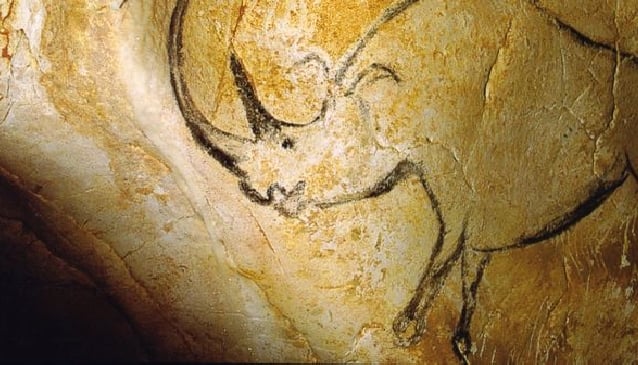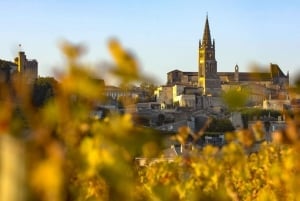A Rave about Bordeaux Caves
Caves straddle the line between perfection and imperfection
Book Top Experiences and Tours in Bordeaux:
If youʻre booking your trip to Bordeaux last minute, we have you covered. Below are some of the top tours and experiences!- From Bordeaux: St. Emilion Village Half-Day Wine Tour
- From Bordeaux: Medoc Half-Day Wine Tour
- Bordeaux: St-Emilion Vineyards e-Bike Tour with Wine & Lunch
- From Bordeaux: Arcachon Bay Full Day Tour and Oyster Lunch
- From Bordeaux: Cognac Private Wine Tour
Some of them are musty and damp. Others are dusty and cramped. But then there are a few splendiferous examples which truly astound, subterranean cathedrals carved by Mother Nature herself. Caves straddle the line between perfection and imperfection, chance creations that are beautiful in their unique, unorthodox design. Many outdate the human race, having been gradually moulded and formed over a length of time that is impossibly difficult for any of us to comprehend. However, all share the ability to mesmerise and intrigue us, no matter how big or small.
Here are four divine examples of caves at their most stupendous, forming the finest of attractions.
When Pablo Picasso visited the Caves of Lascaux, he cast his expert eyes over the Paleolithic rock paintings and declared ‘we have invented nothing.’ He must have been either impressed or stubbornly forgetful. Nestled within the Dordogne region, east of Bordeaux and near Montignac, these caves and their remarkably preserved decorations were discovered in 1940 by four teenagers and their dog, Robot, who must have felt like they’d just stepped into the middle of a Secret Seven novel.
Specialists have estimated the paintings to be roughly 17,300 years old, placing them firmly within the period when grunting Homo sapiens swung their knuckles about the earth, not dissimilar to the teenager of today. Yet they were capable of astonishing things, and managed to decorate this cave system with almost 2,000 intricate pictures that have become known as the ‘Sistine Chapel of Prehistory’, including human figures, stags, cattle, bison, birds, bears, rhinoceroses and, perhaps most notably, four ginormous black bulls in the Hall of the Bulls.
Accordingly, the caves have been designated a UNESCO World Heritage Site, although this hasn’t prevented them from suffering a recent bout of mould thanks to their prolonged exposure to people and technology. Mindful of this, a replica of two of the cave’s most resplendent halls – Lascaux II – was opened in 1983, with 20 foot limestone walls bearing facsimiles of the original masterpieces, painted from the same mineral pigments.
Top tips: As with many popular tourist attractions, try to arrive at the Caves of Lascaux early to avoid frenzied crowds. Also, don’t bother tapping ‘Lascaux’ into your GPS, else you’ll find yourself driving in circular patterns around a small hamlet at the top of an annoyingly lofty hill. Try ‘Montignac’ instead.






















If you thought the four boys who discovered the Caves of Lascaux with their dog would have been surprised at their unexpected find, spare a thought for the poor cow who exposed Grotte de Pair-non-Pair in 1881. One imagines she had been minding her own business, looking for some fine grass to chew, when all of a sudden she got her foot stuck and the next minute found herself thrust to the centre of a media storm beneath headlines bearing comparisons to Indiana Jones of the moo-vie world. At least that’s what would have happened had she found the cave 100 years later.
Grotte de Pair-non-Pair sits outside Bordeaux in the town of Prignac et Marcamps (near Bourg), a cave which has been instrumental in developing our understanding of the prehistoric period. When it was discovered, Grotte de Pair-non-Pair was brimming with loot, including 15,000 flint tools and 6,000 animal bones belonging to 60 different species, all of which is now on display at the Musée d’Aquitaine and the Natural History Museum in Bordeaux. Apparently the cow was allowed to keep none of it.
In an uncanny precursor to Noah and his arc, the carvings on the cave’s craggy walls depict animals in pairs (hence ‘Pair-non-Pair’), such as oxen, mammoths and horses, as well as an etching of the megaloceros, which sounds like a very, very cool creature (in fact, it is the largest deer of all time).
Top tips: This is one of only a few prehistoric caves still open to the public, and, as such, it is protected by conservation constraints. The number of visitors allowed entry are limited, so book a week in advance at the very least.








When it comes to building your own swanky bachelor pad, few can match the efforts of Emilian, a hermit monk who carved his home into limestone in France’s Aquitaine region during the 8th century. In time this spawned a medieval city named after the monk – Saint Emilion – which is now a UNESCO World Heritage Site that encompasses the surrounding wine region (the first of its kind to be bestowed with such a title).
One of the area’s most resplendent attractions is the 12th century Saint-Emilion Monolithic Church, which took three centuries for Emilian’s devout followers to complete and necessitated the removal of 15,000 cubic metres of rock. But how worthwhile their efforts were. The part-subterranean structure is carved entirely from a hillside, and boasts three naves and a catacomb; an astounding feat even by today’s standards.
Top tips: Saint Emilion is one of the most popular tourist sites in France, receiving over 1 million visitors during the summer months. Avoid the rush by visiting in April, May, September or October.


Although it was discovered way back 1845, it was not until relatively recently that the Celestine Grotto registered on touristic radars. Indeed, prior to the mid-1970s, it was known only to experienced cavers who accessed it though an opening now known as the Founders Bedroom. Today, the cavern is reached via an underground stream lined with spindly stalactites that look like great elastic bogies hanging menacingly from the ceiling.
The cave can be found in Rauzan, a small village in the Aquitaine region, beneath which its trails stretch for over 2km. The tunnels would once have been the glistening thoroughfare of a river, to which they owe their existence and exquisite smooth contours, though they are now comparatively parched.
Top tips: It is prudent to reserve a space on one of the Grotto’s 45 minute tours, for numbers are limited. Additionally, while it is a superb Bordeaux attraction for families, children must be at least 1.20 metres to enter, and it’s a good idea to take warm clothing!













